
Zaraisk Kremlin (1528-31). East wall with cupolas of the St. Nicholas Cathedral. Right: Treasury (Kazennaia) Tower. August 22, 2003
William BrumfieldAt the beginning of the 20th century, Russian chemist and photographer Sergey Prokudin-Gorsky developed a complex process for vivid, detailed color photography. His vision of photography as a form of education and enlightenment was demonstrated with special clarity through his photographs of architectural monuments in historic sites throughout the Russian heartland.
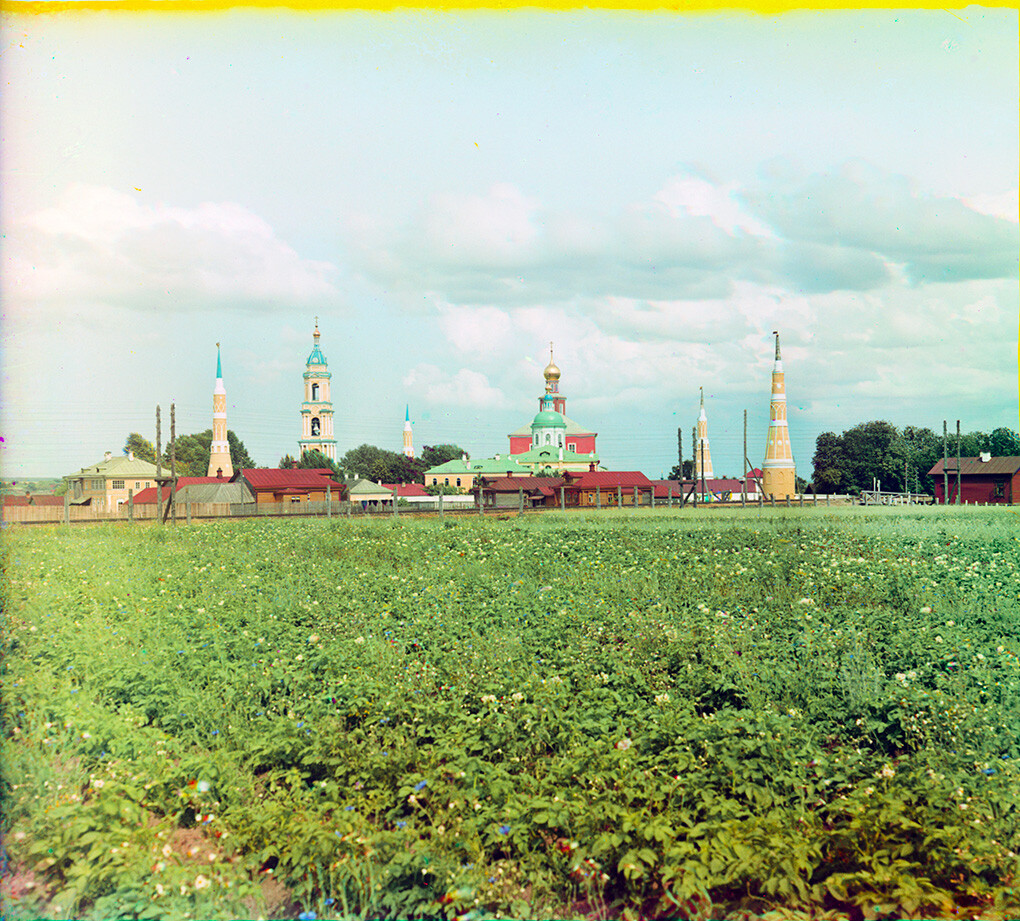
Near Kolomna. Old Golutvin Epiphany Monastery, west view. From left: northwest corner tower, bell tower, NE corner tower, Epiphany Cathedral & St. Sergius Church, SE corner tower, SW corner tower. Foreground: railroad & potato field. Summer 1912
Sergey Prokudin-GorskyAmong the sites photographed by Prokudin-Gorsky in 1912 was the Epiphany-Golutvin Monastery (known after 1800 as the Old Golutvin Monastery), near Kolomna some 115 km south of Moscow. The monastery’s walls and fanciful towers suggest an imaginary fortress, but the nearby small town of Zaraysk has the real thing, one of the best-preserved medieval fortresses in Russia.
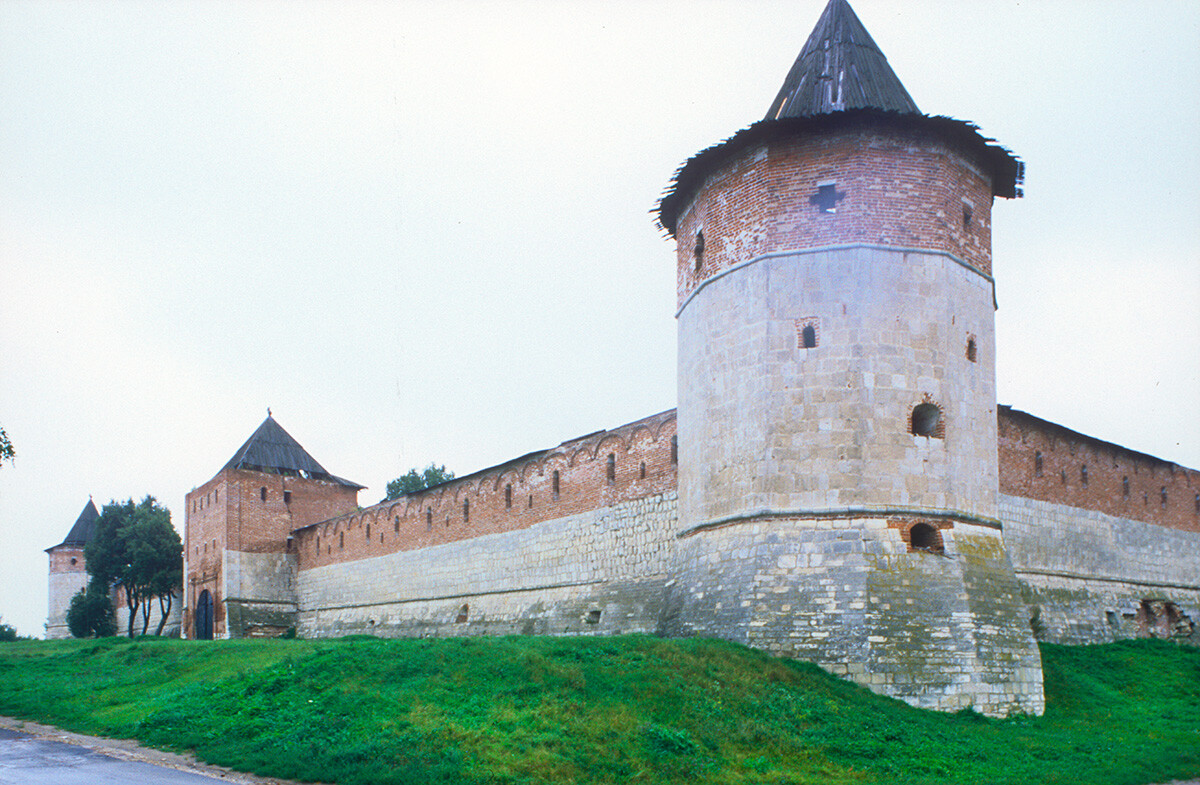
Zaraisk Kremlin. West wall, southwest view. From right: Tainitaskaya Tower (southwest corner); Yegorev Passage Tower; Watch Tower (northwest corner). August 21, 2003
William BrumfieldMoscow Region encompasses several historic settlements, but Zaraysk, located 150 km southeast of the capital, has a special luster. Modest in size (population about 20,000), it is associated with three extraordinary figures in Russian history: a heroic prince – Dmitry Pozharsky; a major sculptor – Anna Golubkina; a great writer – Fyodor Dostoevsky.
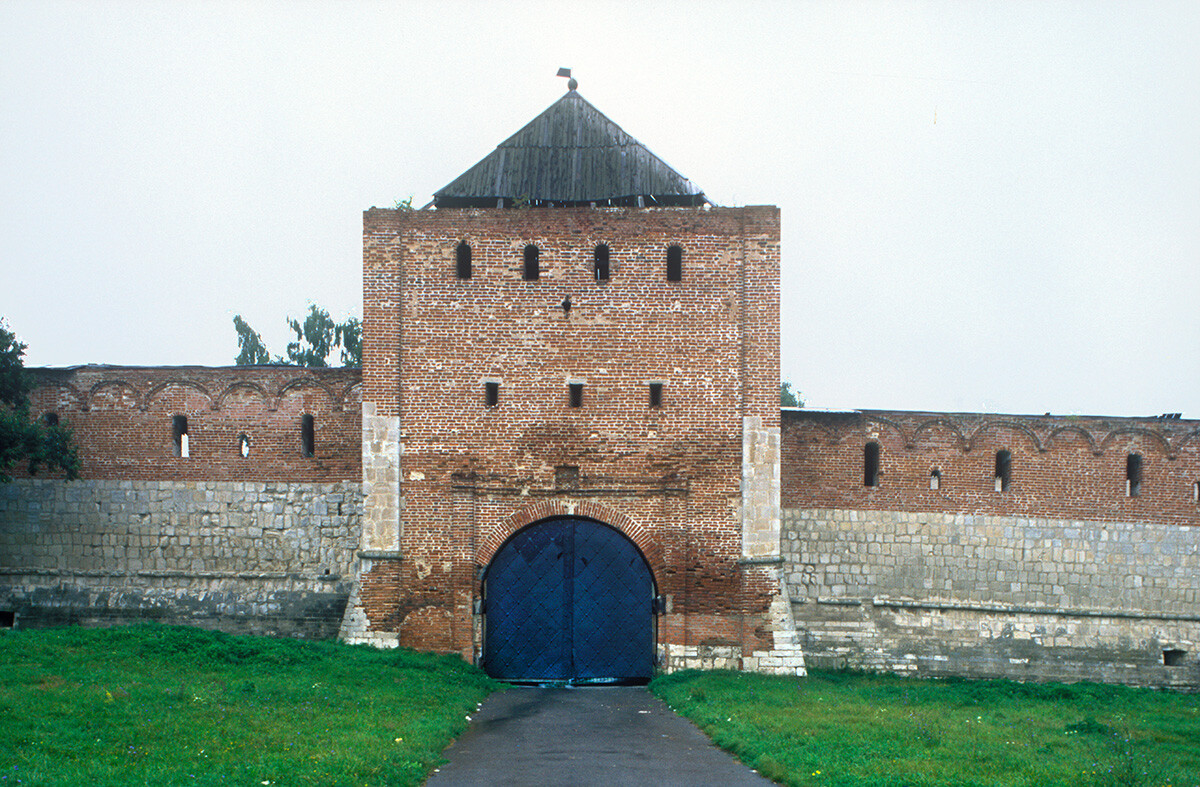
Zaraisk Kremlin. West wall, Yegorev Passage Tower. August 21, 2003
William BrumfieldZaraysk has another, quite visible distinction: a uniquely preserved brick fortress, or kremlin. Although other regional towns such as Kolomna have restored fragments of larger fortresses, Zaraysk has managed to save a complete walled enclosure built in the 16th century. These stout walls would witness dramatic events at a critical point in early 17th-century Russian history.
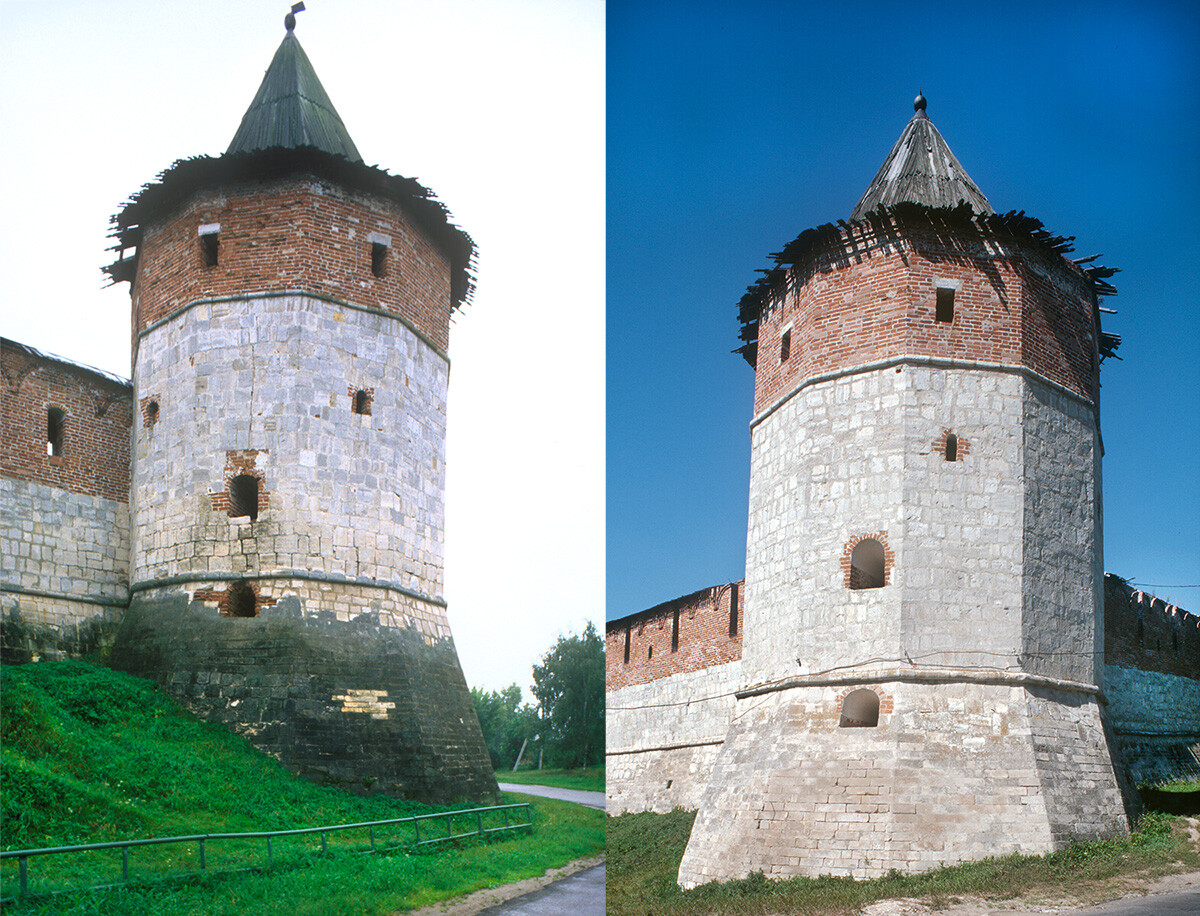
Zaraisk Kremlin. Watch Tower (northwest corner with part of north wall) and Corner Tower (southeast corner). August 2003 and 2005.
William BrumfieldThe first mention of Zaraysk in medieval sources occurs under the year 1146, one year before the earliest reference to Moscow. At that time, it was called Osyotr, after the Osyotr River, a small tributary of the Oka. By the beginning of the 13th century, the settlement was known as Krasny, a word that means ‘red’ now, but also meant ‘beautiful’ in medieval Russia.
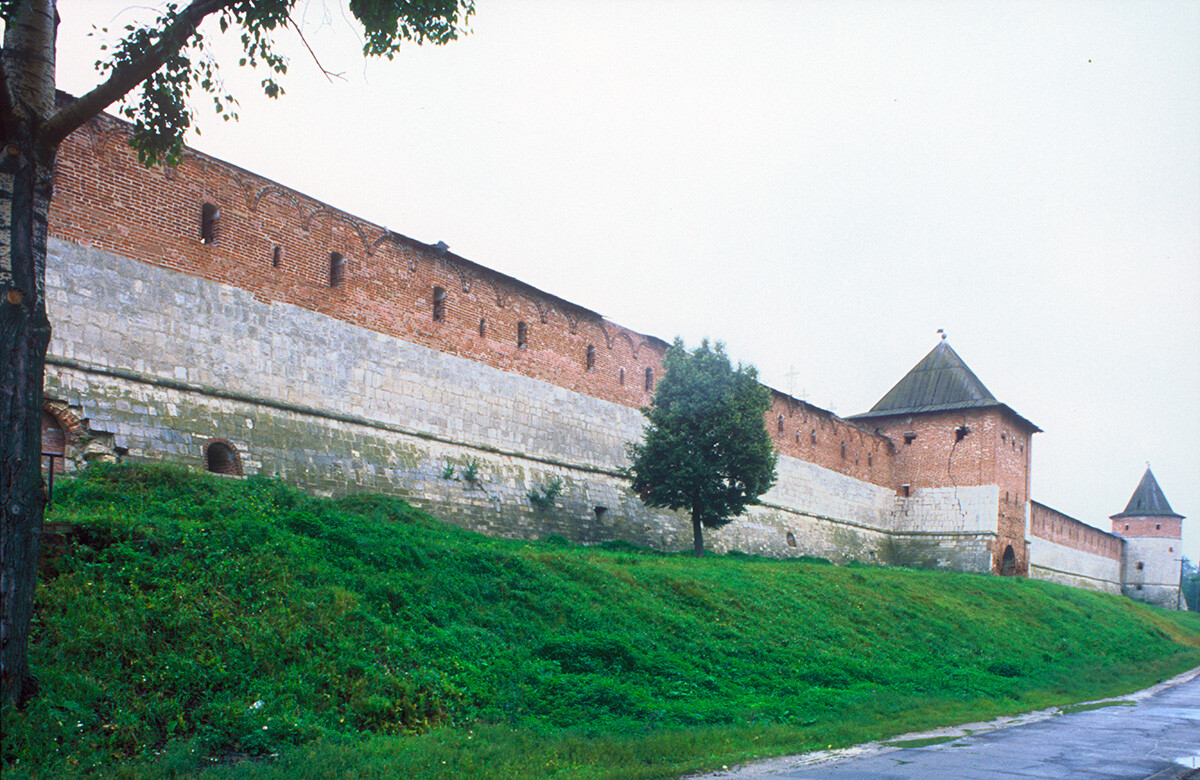
Zaraisk Kremlin. South wall, southwest view. From left: Savior Passage Tower; Corner Tower. August 21, 2003
William BrumfieldBut, this fair reputation did not spare Krasny (later Zaraysk) from the cataclysm that struck the Russian lands with the invasion of the Mongol armies of Batu Khan in the late 1230s. The fate of Krasny was closely linked to that of the thriving city of Ryazan, located on the Oka River some 60 km to the southeast.
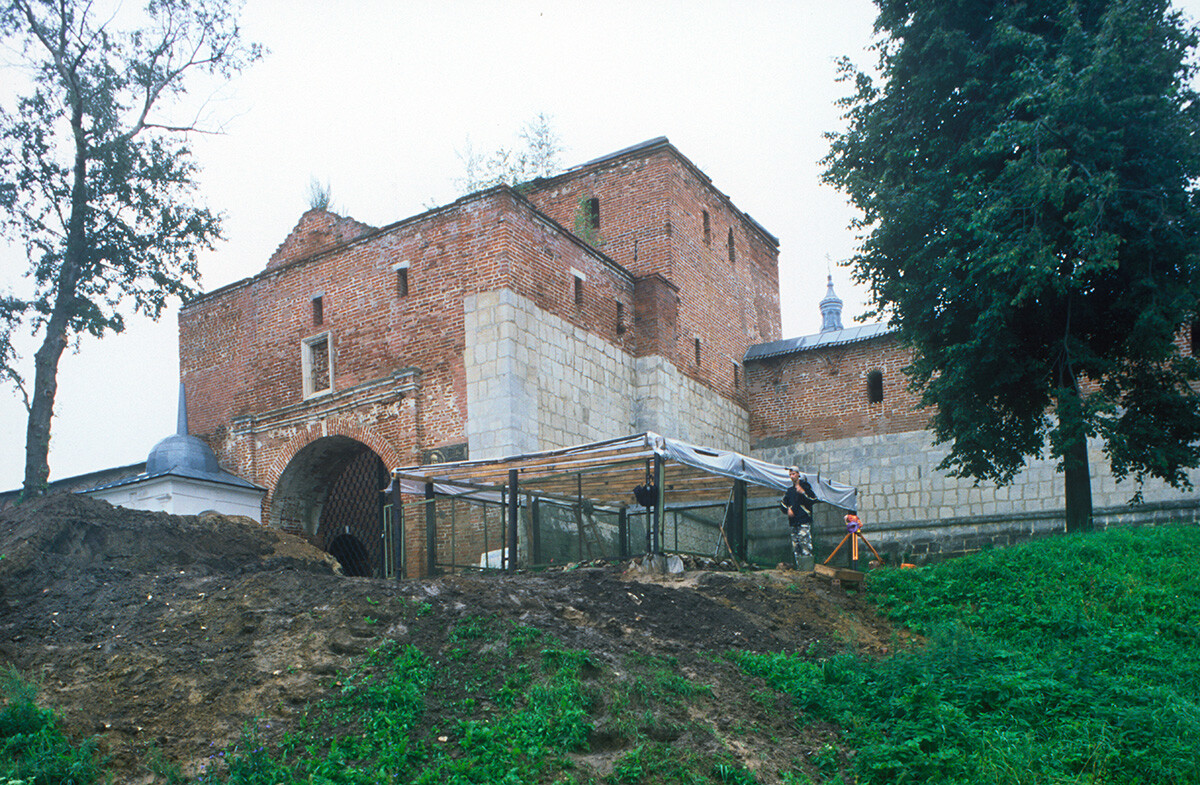
Zaraisk Kremlin. North wall, Nicholas Passage Tower. August 21, 2003
William BrumfieldAt that time, medieval Rus’ was divided into several competing principalities with constantly changing borders and alliances. Parts of major principalities such as Ryazan could be further parceled as allotments to heirs. According to some accounts, Prince Yury, who ruled Ryazan from 1235 to 1237, gave the small area of Krasny to his son Fyodor.
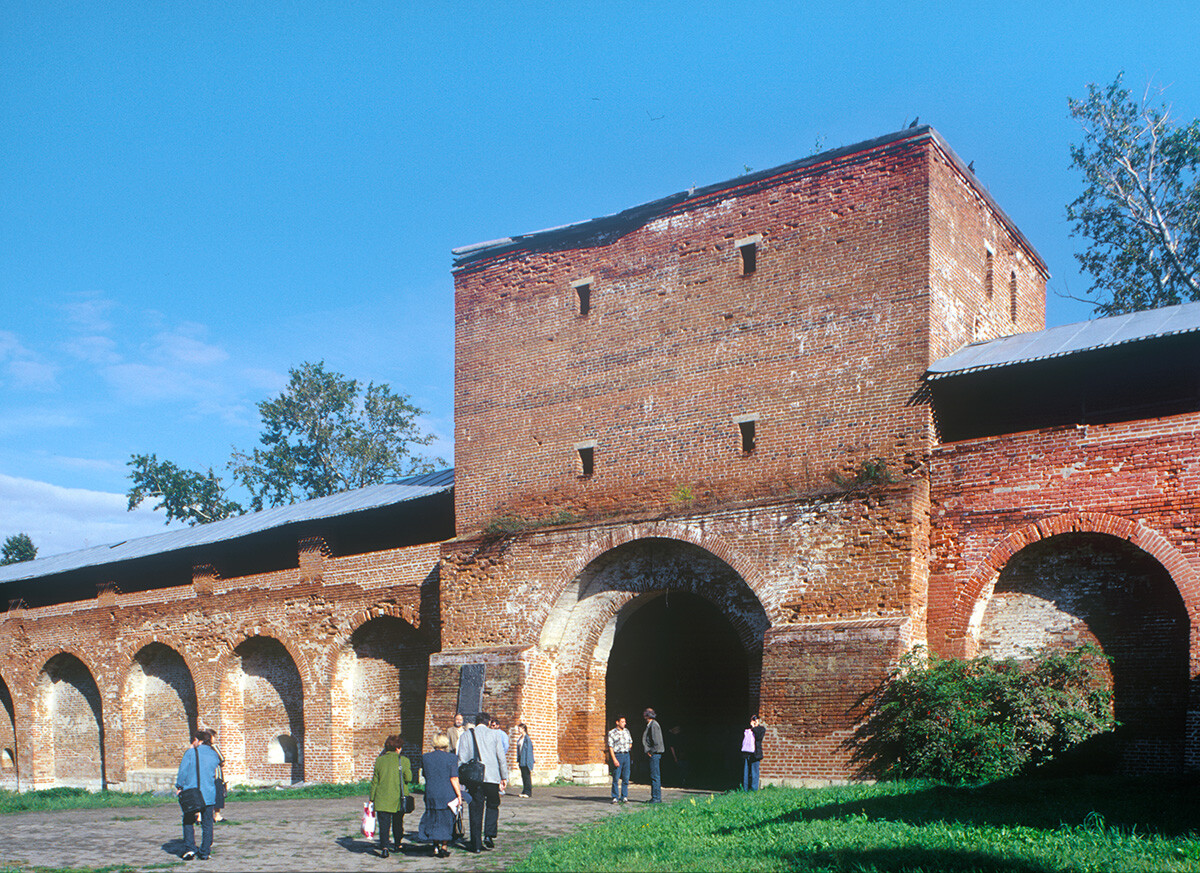
Zaraisk Kremlin. Nicholas Passage Tower, view from St. Nicholas Cathedral. August 22, 2003
William BrumfieldReliable historical information is sparse for this period, with fact and legend often intertwined. In early December 1237, the forces of Batu Khan approached Ryazan, which they stormed and devastated after defeating the forces of Prince Yury. The prince was himself killed in the battle, presumably near the Voronezh River.
This bare account was richly elaborated in a work called ‘The Tale of the Destruction of Ryazan’, attributed to a priest at the Church of St. Nicholas in Zaraysk and known from 16th and 17th century versions. In this tale, Prince Yury sent his son Fyodor to negotiate with Batu Khan, but the Mongol leader was unrelenting.
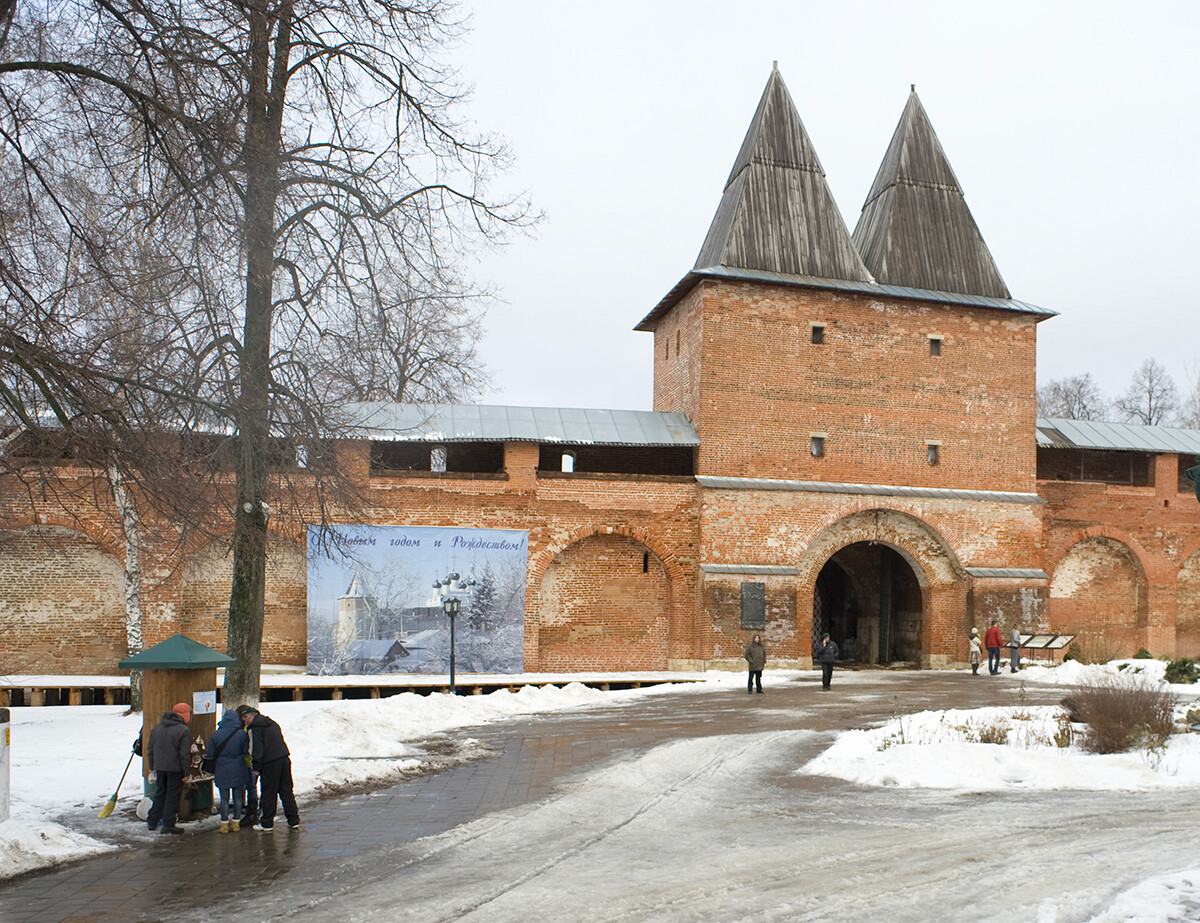
Zaraisk Kremlin. Nicholas Passage Tower, south view. (Note addition of wooden roof towers.) January 3, 2015
William BrumfieldWhen Eupraxia learned of her husband’s death at the hands of the Mongols, she leapt from a tower with her infant son, rather than submit to Mongol capture. By some accounts, her death occurred at the site subsequently occupied by the Church of St. Nicholas in Zaraysk.
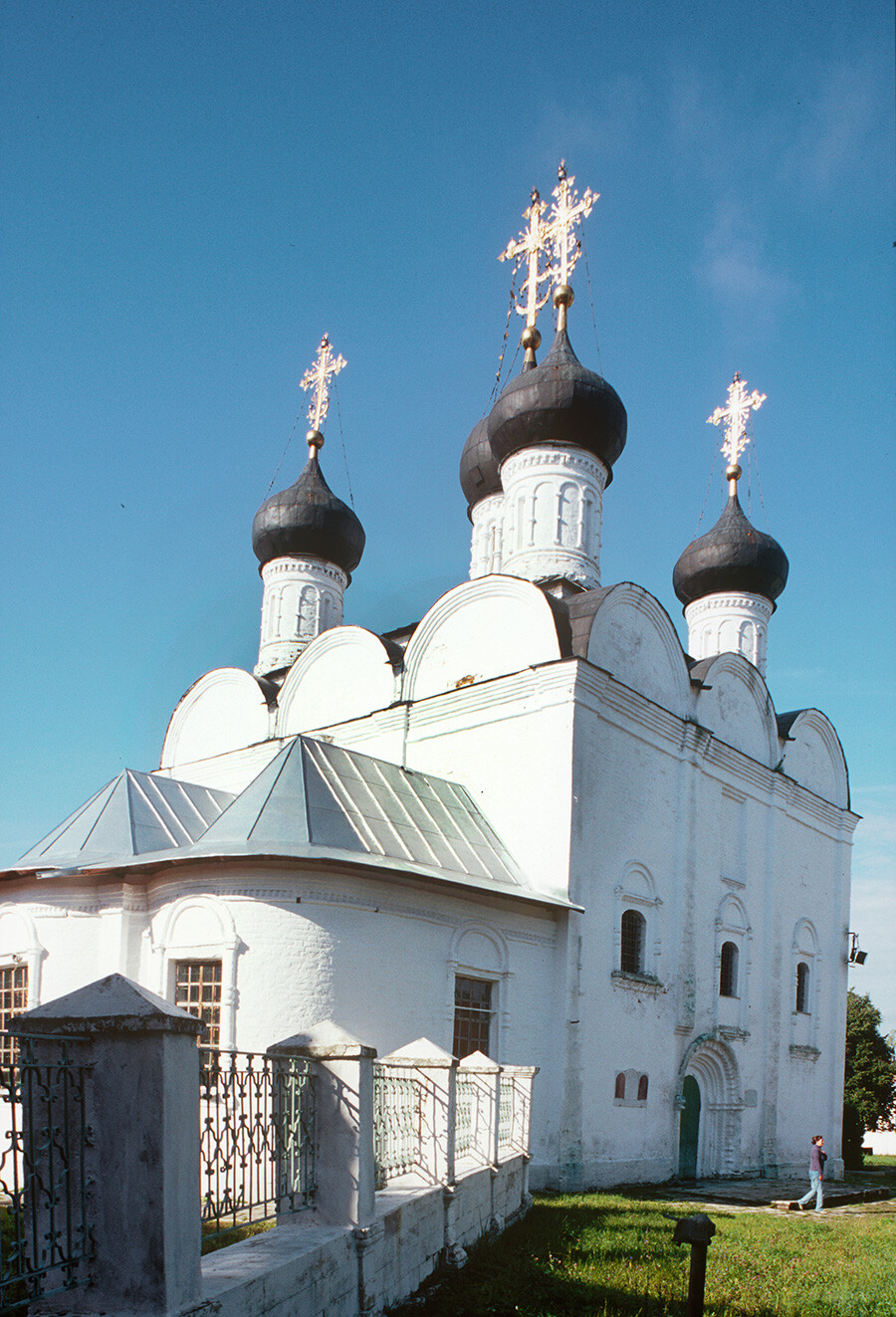
Zaraisk Kremlin. St. Nicholas Cathedral, northeast view. August 22, 2003
William BrumfieldThe legend is further enmeshed in accounts of the miraculous Icon of St. Nicholas of Zaraysk (also Zarazsk), originally located in a 10th-century church in the ancient Crimean town of Chersoneses and transported in 1224 to the Ryazan lands. In 1513, the icon was evacuated from Zaraysk to the nearby large fortress of Kolomna to protect it from an invasion of Crimean Tatars, but the Church of St. Nicholas continued to be associated with the wonder-working icon. Although no building from this period has survived in the town, Zaraysk and its miraculous icon were widely known in Russia following the Mongol invasion.
In 1480, Moscow formally abrogated subservience to the successors of the Golden Horde on the Volga River, but Muscovy’s southern lands were increasingly vulnerable to raids by Crimean Tatars for slaves and booty. The first half of the 16th alone witnessed 43 significant incursions from the Crimea.
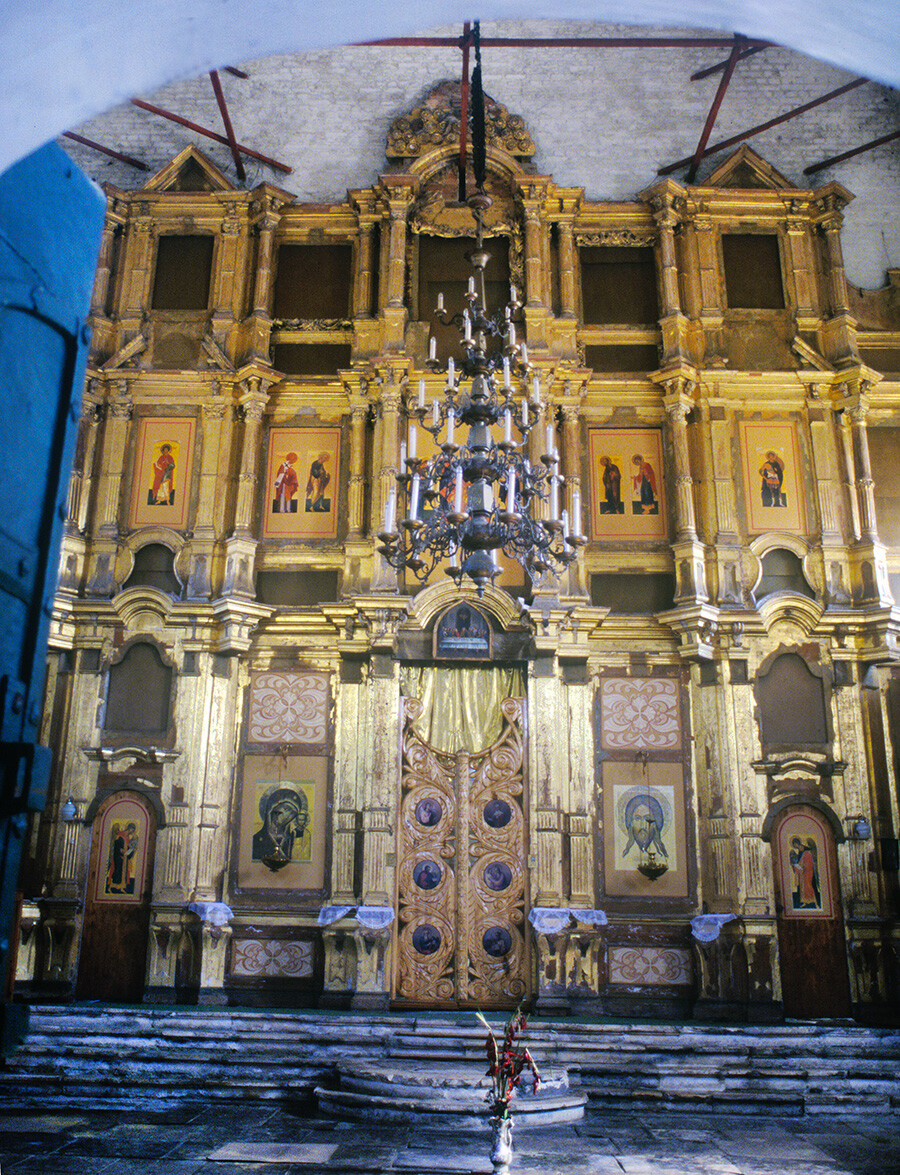
Zaraisk Kremlin. St. Nicholas Cathedral, interior, view east toward icon screen. August 27, 2005
William BrumfieldIn response to the Crimean threat, Tsar Vasily III (1479-1533) initiated a campaign to strengthen its southern borders with a fortified line (zasechnaya cherta) anchored by fortress towns such as Tula and Kolomna. A major strategic advance occurred in 1521 when the Ryazan principality was completely absorbed into Muscovy. Soon thereafter, work began on a brick and limestone kremlin in the center of Zaraysk, then known as St. Nicholas Zarazsky on the Osyotr.
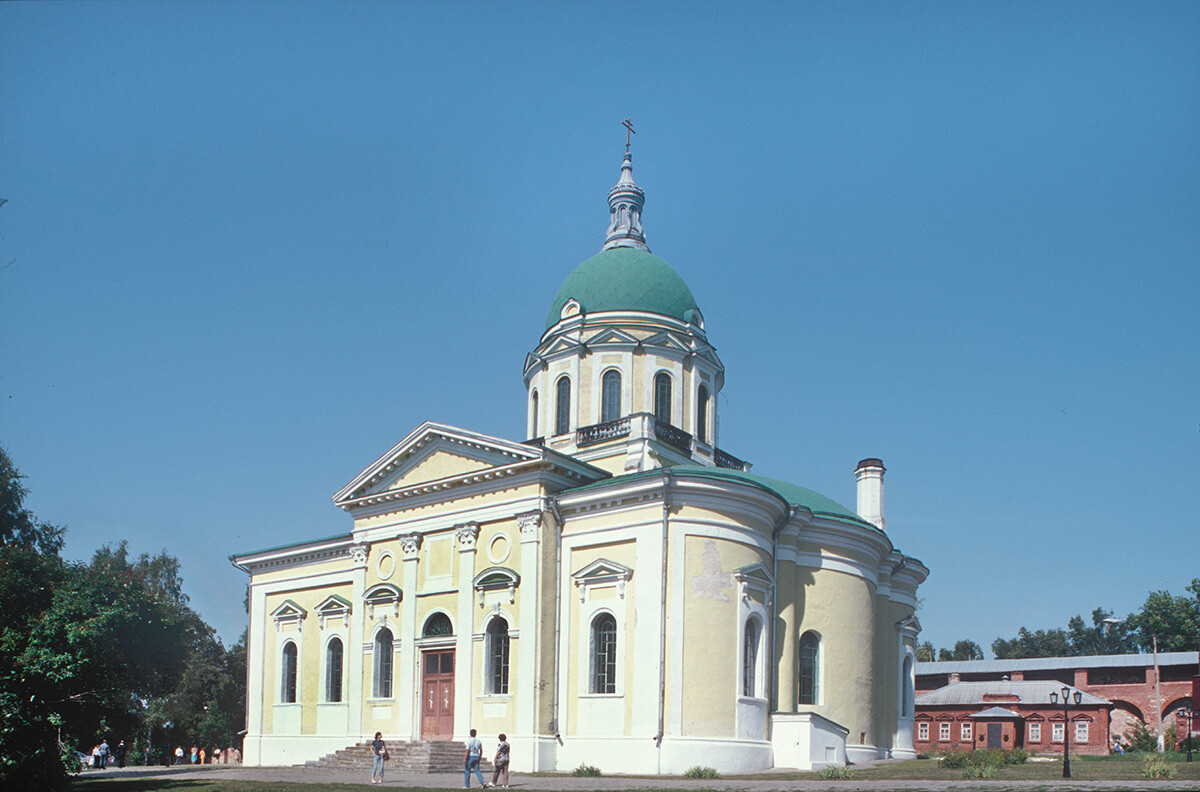
Zaraisk Kremlin. Cathedral of the Decapitation of John the Baptist, southeast view. August 27, 2005
William BrumfieldBuilt between 1528 and 1531, the rectangular Zaraysk Kremlin is a gem of Russian fortress architecture. Its fine brick walls are reinforced by four corner towers, as well as three gate towers. The fortress served its purpose well in repulsing several Crimean Tatar attacks, including one that occurred as part of a major invasion by the renowned Crimean khan Devlet I Giray in 1570.
As an indication of its importance, Zaraysk was visited four times by Tsar Ivan IV, the Terrible. Although the Crimean Tatar threat lessened after their crushing defeat by Muscovite forces at the Battle of Molodi (1572), the Zaraysk Kremlin would become involved in another prolonged series of conflicts during the early 17th century.
The death of Tsar Boris Godunov in April 1605 and the murder of his son and widow in June 1605 left Russia with no clear successor to the throne. An already exhausted country, thus, entered a national cataclysm known as the Time of Troubles, part civil war and part dynastic struggle (involving Polish claimants) that waned only after the founding of the Romanov dynasty in 1613.
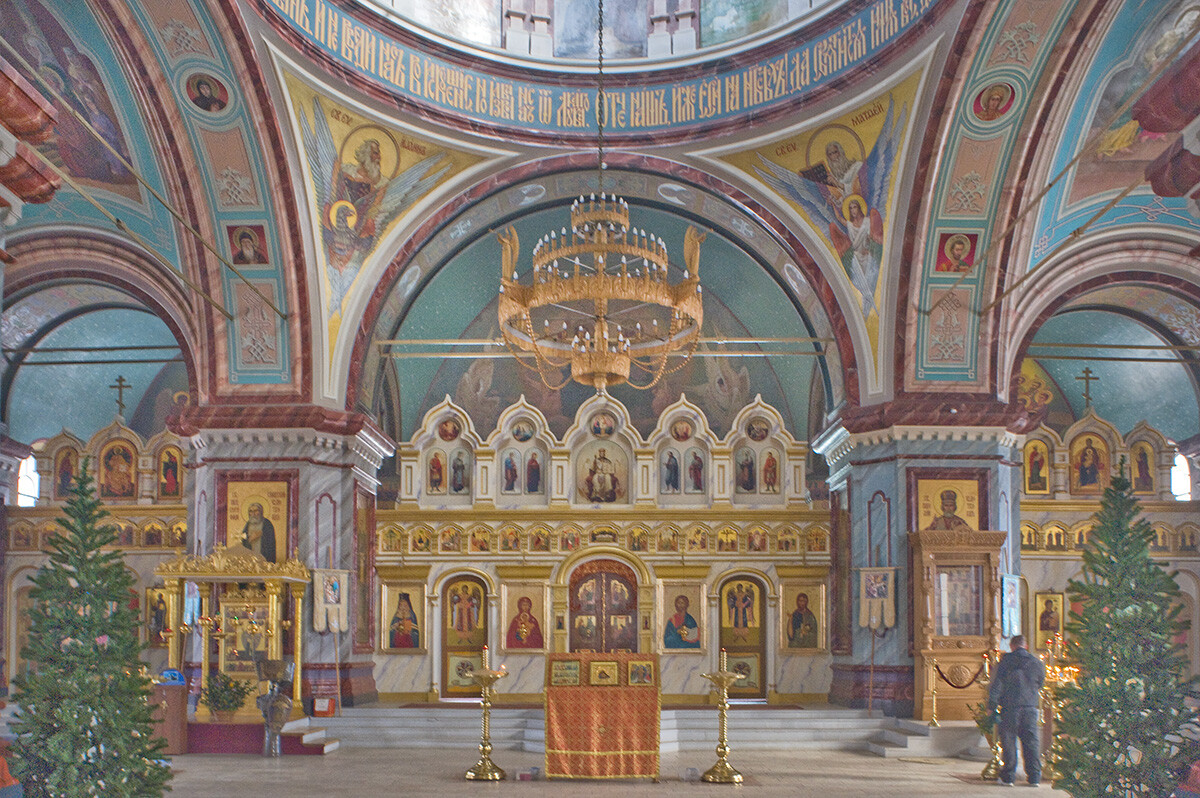
Zaraisk Kremlin. Cathedral of the Decapitation of John the Baptist, interior, view east toward icon screen. January 3, 2015
William BrumfieldMuch of European Russia was devastated by warring factions that included Poles, Lithuanians and Swedes. The disaster was compounded by rebellious armed bands, as well as by Russians allied with pretenders to the throne who claimed to be Tsarevich Dmitry, Ivan the Terrible’s last son, who perished at the age of eight in mysterious circumstances.
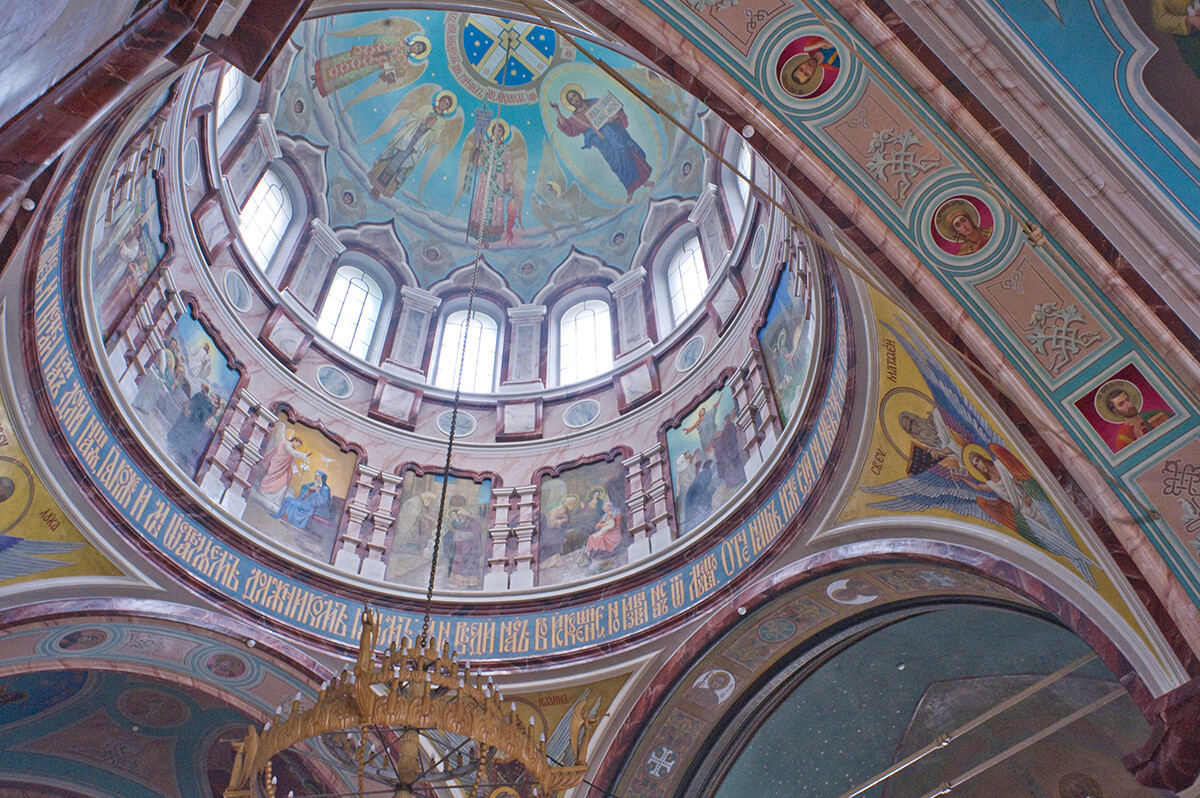
Zaraisk Kremlin. Cathedral of the Decapitation of John the Baptist, interior, dome. January 3, 2015
William BrumfieldDuring the disarray and confusion, Zaraysk was from 1607 occupied by various groups and in 1608 was seized by Polish forces led by Alexander Lisovsky, who supported the second False Dmitry. Costly attempts by Russian patriots to retake the town succeeded only in June 1609 and in 1610 command of the Zaraysk Kremlin was given to Prince Dmitry Pozharsky (1578-1642) from the Suzdal area.
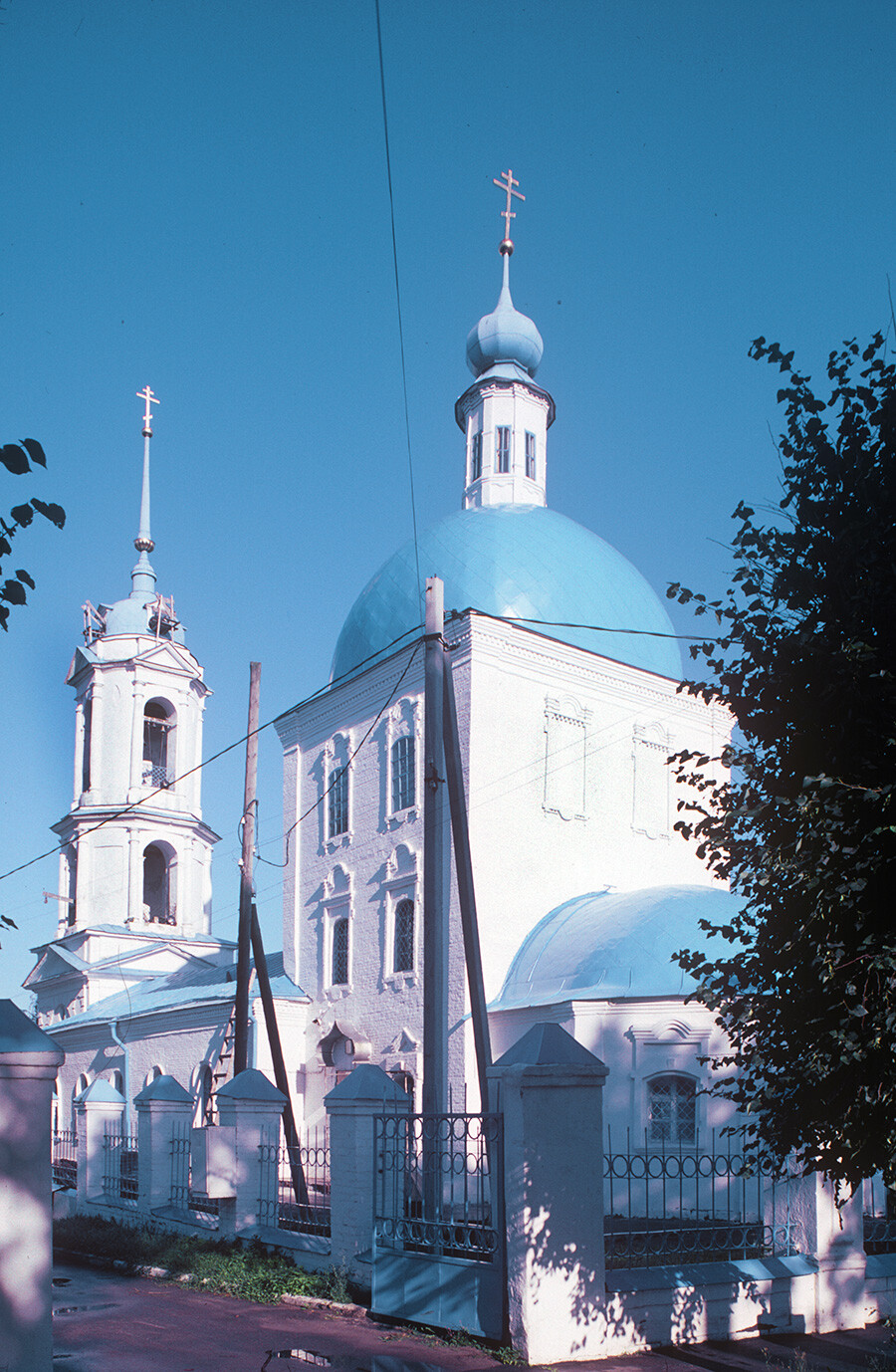
Zaraisk. Church of the Annunciation, southeast view. Begun in 1777, consecrated at beginning of 19th century. Bell tower added in 1825. August 22, 2003
William BrumfieldThroughout 1610, Prince Pozharsky succeeded in repelling forces loyal to the second False Dmitry, and in early 1611 he and his Zaraysk troops marched on Polish-occupied Moscow as part of the First People’s Army. Wounded and with dwindling resources, Pozharsky withdrew to his estate until news came of a second People’s Army, led by Kuzma Minin of Nizhni Novgorod. With the proclaimed support of Minin, Prince Pozharsky took command of the new army and in August 1612 expelled Polish forces from Moscow, thus clearing the way for the young Michael Romanov (1596-1645) to assume power as the first of the Romanov tsars in 1613.

Zaraisk. Left: Church of Elijah the Prophet (1835), northeast view. Right: Church of the Trinity (1776-1788), northwest view. Fyodor Dostoevsky would have seen these churches during his trips through Zaraisk to the family estate at Monogarovo. August 21, 2003
William BrumfieldWith the country’s recovery in the 17th century, Zaraysk continued to serve as a reliable fortress, repulsing its last raid from the Crimea in 1673. In 1681 the Church of St. Nicholas was rebuilt as a cathedral in the kremlin. The fortress also contains the Cathedral of the Decapitation of John the Baptist, reconstructed to a design by Constantine Bykovsky in 1901-04.

Zaraisk. Merchants Court (Gostiny dvor). August 27, 2005
William BrumfieldThe modest growth of Zaraysk in the 18th and 19th centuries is reflected in surviving monuments such as the Church of the Annunciation and the Church of Elijah the Prophet, as well as merchant houses and a complex of neoclassical trading rows. In 1779-1780 Zaraysk gained a new general plan, part of a project to improve the appearance of provincial towns during the reign of Catherine the Great. During the early 19th century Zaraysk became a local center of the grain trade, but major road development passed the town by.
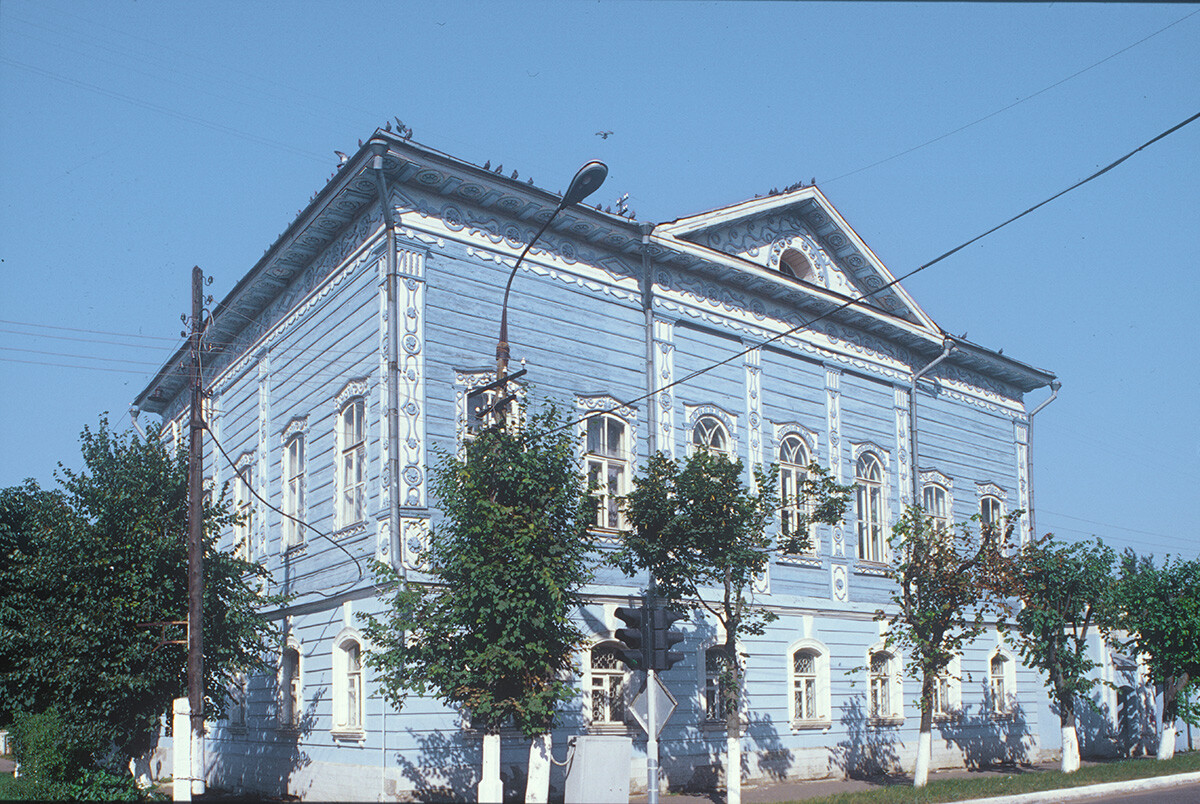
Zaraisk. Mid 19th-century wooden mansion on brick ground floor (Soviet Street 29). Built for a wealthy merchant, the house was acquired by the Machtet family in late 1880s. August 27, 2005
William BrumfieldThis modest provincial merchant town would, however, become known to Fyodor Dostoevsky, who passed through Zaraysk on the way to the nearby family estate. (That connection will be explored in a separate article for this series.)
Zaraysk has a street named after the great writer, and although the town does not appear in his literary work, it formed a part of his web of memories of the Russian heartland. And now the remains of his beloved mother, Maria Fyodorovna Dostoevky, rest in a tomb within the Cathedral of John the Baptist in the Zaraysk Kremlin.

Zaraisk. Anna Golubkina House-Museum (Dzerzhinsky Street 38). January 3, 2015
William BrumfieldAt the turn of the 20th century, Zaraysk would nurture the artist Anna Golubkina (1864-1927), the first Russian woman to achieve major fame as a sculptor. Born in Zaraysk to a family of Orthodox dissenters known as Old Believers (the Fillipovtsy sect), Golubkina was largely educated at home. With the encouragement of a Zaraysk teacher, Golubkina left in 1889 for study in Moscow.
Her studies continued in St. Petersburg and Paris, where she worked as an assistant to Auguste Rodin in 1897-1900. Returning to Moscow in 1901, Golubkina received important commissions, including the frieze “The Wave” over the main entrance to the Moscow Art Theater, designed by the noted architect Fyodor Shekhtel.
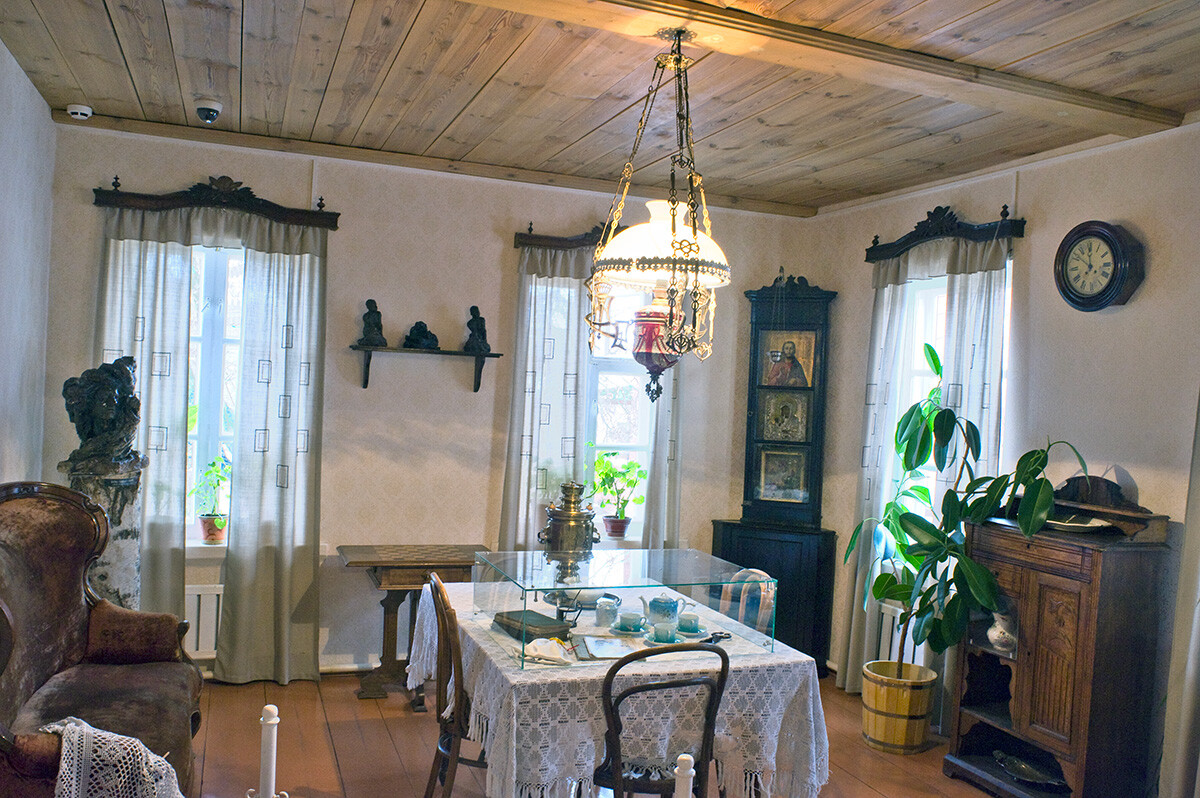
Anna Golubkina House-Museum. Interior, living/dining room. January 3, 2015
William BrumfieldAfter the 1917 revolution Golubkina continued to work as a sculptor and teacher in Moscow, but her health deteriorated. Seriously ill, she returned in the summer of 1927 to the family house in Zaraysk, where she spent the brief period before her death on September 7. In 1974 this early 19th-century house was converted to a museum in her memory.
During the Soviet era, Zaraysk remained a provincial backwater with a few small factories. In early December 1941 the town was threatened by the southern prong of the German attack on Moscow, but the enemy was pushed back later that month as part of the great Soviet counteroffensive in the Battle of Moscow. Rich in associations with history and the arts, Zaraysk is today confronted with the challenge of preserving its historic environment with limited resources.
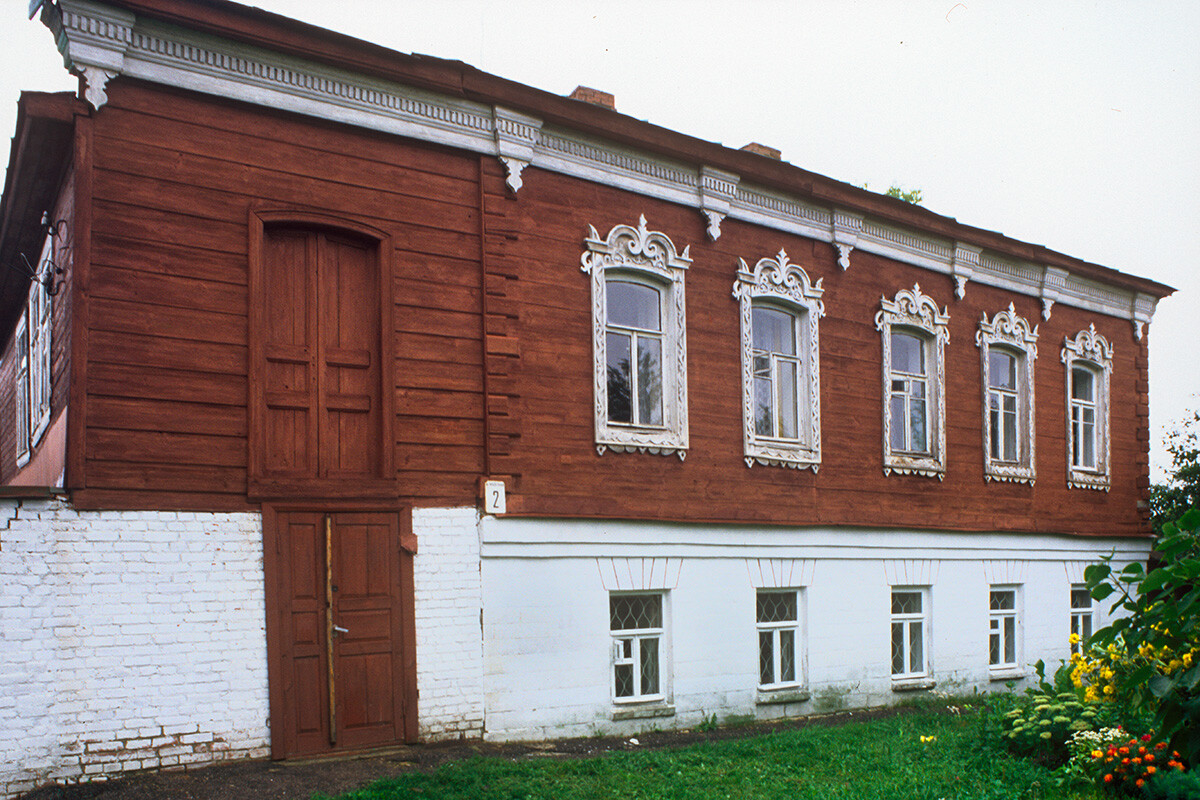
Zaraisk. 19th-century wooden house on brick ground floor (Kremlin Descent 2). August 21, 2003
William BrumfieldIn the early 20th century, Russian photographer Sergey Prokudin-Gorsky developed a complex process for color photography. Between 1903 and 1916, he traveled through the Russian Empire and took over 2,000 photographs with the process, which involved three exposures on a glass plate. In August 1918, he left Russia and ultimately resettled in France, where he was reunited with a large part of his collection of glass negatives, as well as 13 albums of contact prints. After his death in Paris in 1944, his heirs sold the collection to the Library of Congress. In the early 21st century, the Library digitized the Prokudin-Gorsky Collection and made it freely available to the global public. A few Russian websites now have versions of the collection. In 1986, architectural historian and photographer William Brumfield organized the first exhibit of Prokudin-Gorsky photographs at the Library of Congress. Over a period of work in Russia, beginning in 1970, Brumfield has photographed most of the sites visited by Prokudin-Gorsky. This series of articles juxtaposes Prokudin-Gorsky’s views of architectural monuments with photographs taken by Brumfield decades later.
If using any of Russia Beyond's content, partly or in full, always provide an active hyperlink to the original material.
Subscribe
to our newsletter!
Get the week's best stories straight to your inbox